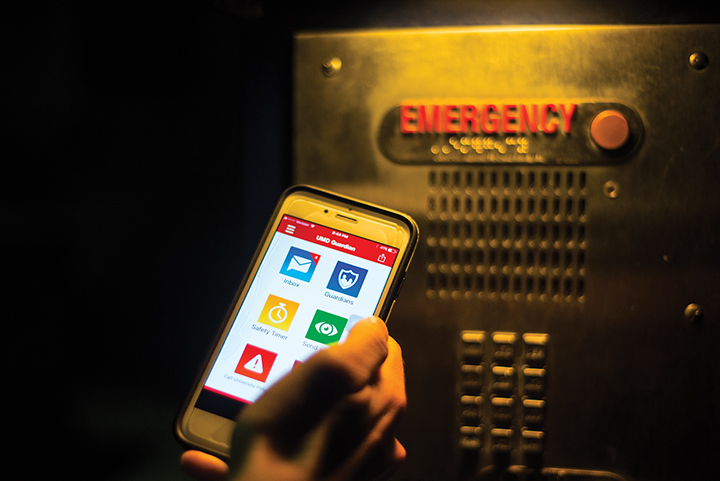To encourage more students to download the Rave Guardian app, University Police are increasing their promotional efforts this semester, officials said.
The free smartphone app, which allows anyone with a university email address to register through the umbrella application Rave Guardian, gives users access to an abundance of useful resources, said Mark Limansky, commander of University Police’s technology services bureau.
Since its Nov. 19 debut, the app has been downloaded 219 times, said Appar Singh, University Police’s information technology manager. Because of extensive testing, there have been no difficulties or glitches, Singh said.
Looking to the fall, University Police have strengthened efforts to raise awareness for the application, Limansky said. Promotional initiatives include a video created by University Police, which was uploaded to their official YouTube channel on March 22 and shared on social media.
“We think this spring push will really get the word out,” Limansky said. “Our intent for the campaign and the app is to promote safety on and around campus for our students, faculty and staff.”
The app’s features include s a safety timer, which allows a user to have up to five previously selected “guardians” virtually monitor their progress as they travel across the campus.
“Sometimes people are nervous but don’t want to wait for a physical escort,” Limansky said. “This gives them another way to feel safe and feel that someone is watching over them while they’re walking from point A to point B on-campus.”
The app also allows users to text anonymous tips to police, send distress signals and contact other local agencies if they are not on the campus, Limansky said.
“This is a really simple and rock-solid application,” Singh said. “Rave, as a company, is fantastic. They’re a leader in the industry.”
Another one of the application’s features is the safety profile, with which users can input whatever descriptive information they deem helpful for a responder coming to their aid, Singh said. Profile information could include photos, a physical description, medical conditions and emergency contacts — all of which can only be accessed by police in a user-initiated emergency.
“With the [safety profile], if we don’t know how to reach you, we’ll have other ways to check,” Singh said.
The app’s most-used function so far has been the texting feature, Singh said, which allows users to send tips to police anonymously or in combination with their profile information.
On Feb. 14, a domestic dispute on Boteler Lane was successfully reported to police by a victim through this method, and police were able to locate the reporting person using safety profile information.
University Police hope users will turn to the application to report incidents like this one, Limansky said, in which a phone call could be risky or impossible.
“The intent of this application is to give people an alternative means to using traditional resources,” Limansky said.
Beginning this summer, the app will be introduced to incoming freshmen and new employees during their respective orientations, Limansky said. Police expect that these efforts will increase the number of app downloads dramatically, he said.
Police will promote the app during safety presentations within dorms, fraternities and sororities as well, Limansky said. The bottom of each UMD Safety Notice also includes a link for students, faculty and staff to download the app.
“This is a generally safe area,” Limansky said. “But it’s reassuring for family, friends and loved ones to know that their children are being protected, and the Guardian app allows us to do that.”



